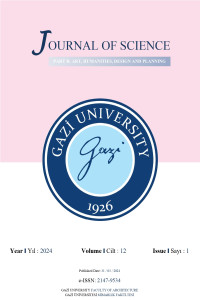Abstract
The complex and multidimensional nature of industrial design activity requires the consideration of multiple perspectives in its exploration. Therefore, design theories have often been developed using various perspectives from various disciplines. While this has facilitated the expansion of knowledge in the field, the expansion is often comprised of singular theories that claim universality despite their limited scope, resulting in conflicting and contradictory theories. As a result, the inability to establish communication between different theories appear as a significant barrier to cumulative knowledge building in the field. The study explores the field of industrial design in terms of paradigm conceptualization, a criterion for distinguishing what is considered scientific or not, in the philosophy of science of the 20th century. Since a nomothetic theory cannot be built in multi-paradigmatic disciplines, a research strategy for industrial design has been proposed, suggesting the hybrid use of activity theory and grounded theory. This strategy aims to construct partial theories that facilitate communication among different paradigms and support the cumulative knowledge in the field.
References
- [1] Redström, J. (2017). Making Design Theory. Cambridge: MIT Press, 94.
- [2] Friedman, K. (2003). Theory Construction in Design Research: Criteria: Approaches, and Methods. Design Studies, 24(6), 507-522.
- [3] Findeli, A. (1998). A Quest for Credibility: Doctoral Education and Research in Design at the University of Montreal. Doctoral Education in Design, 1.
- [4] Chakrabarti, A., & Blessing, L. T. (2014). Anthology of Theories and Models of Design. London, UK: Springer London Limited.
- [5] Kaptelinin, V. ve Nardi, B. A. (2006). Acting with Technology: Activity Theory and Interaction Design. Cambridge: MIT Press, 333.
- [6] Love, T. (2002). Constructing a coherent cross-disciplinary body of theory about designing and designs: some philosophical issues. Design studies, 23(3), 345-361.
- [7] Jones, D., & Gregor, S. (2007). The Anatomy of a Design Theory. Journal of the Association for Information Systems, 8(5), 1.
- [8] Eckert, C. M., & Stacey, M. K. (2014). Constraints and Conditions: Drivers for Design Processes. In An Anthology of Theories and Models of Design: Philosophy, Approaches and Empirical Explorations (pp. 395-415). London: Springer London.
- [9] Lektorski, V. A. (2016). Özne, Nesne, Biliş 1. Ed. İstanbul: Yordam Kitap.
- [10] Horkheimer, M. (2018). Akıl Tutulması 3. Ed. İstanbul: Metis Yayınları.
Abstract
References
- [1] Redström, J. (2017). Making Design Theory. Cambridge: MIT Press, 94.
- [2] Friedman, K. (2003). Theory Construction in Design Research: Criteria: Approaches, and Methods. Design Studies, 24(6), 507-522.
- [3] Findeli, A. (1998). A Quest for Credibility: Doctoral Education and Research in Design at the University of Montreal. Doctoral Education in Design, 1.
- [4] Chakrabarti, A., & Blessing, L. T. (2014). Anthology of Theories and Models of Design. London, UK: Springer London Limited.
- [5] Kaptelinin, V. ve Nardi, B. A. (2006). Acting with Technology: Activity Theory and Interaction Design. Cambridge: MIT Press, 333.
- [6] Love, T. (2002). Constructing a coherent cross-disciplinary body of theory about designing and designs: some philosophical issues. Design studies, 23(3), 345-361.
- [7] Jones, D., & Gregor, S. (2007). The Anatomy of a Design Theory. Journal of the Association for Information Systems, 8(5), 1.
- [8] Eckert, C. M., & Stacey, M. K. (2014). Constraints and Conditions: Drivers for Design Processes. In An Anthology of Theories and Models of Design: Philosophy, Approaches and Empirical Explorations (pp. 395-415). London: Springer London.
- [9] Lektorski, V. A. (2016). Özne, Nesne, Biliş 1. Ed. İstanbul: Yordam Kitap.
- [10] Horkheimer, M. (2018). Akıl Tutulması 3. Ed. İstanbul: Metis Yayınları.
Details
| Primary Language | English |
|---|---|
| Subjects | Industrial Product Design |
| Journal Section | Industrial Design |
| Authors | |
| Publication Date | March 31, 2024 |
| Submission Date | January 23, 2024 |
| Acceptance Date | March 28, 2024 |
| Published in Issue | Year 2024 Volume: 12 Issue: 1 |


